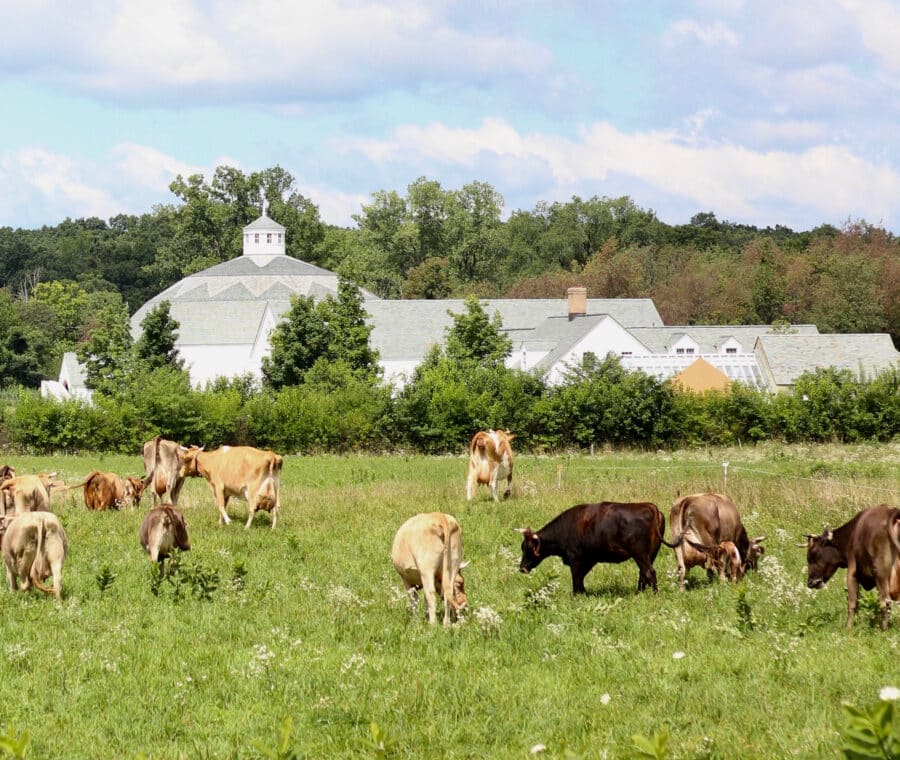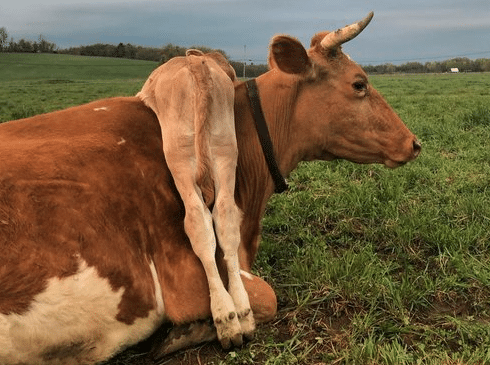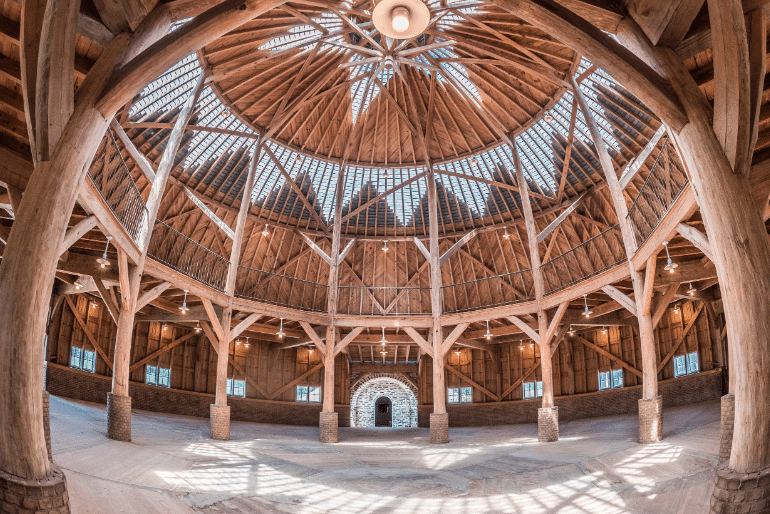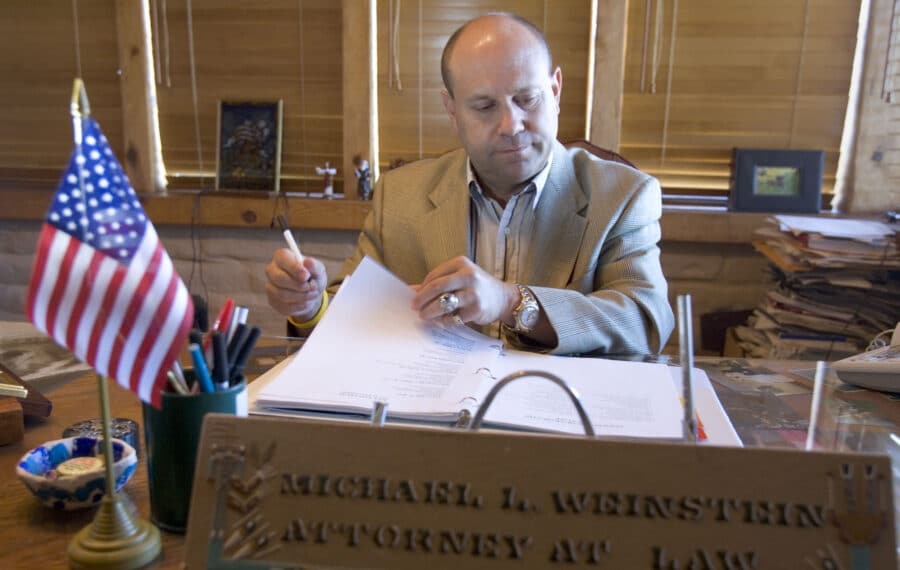On July 1, Iowa officially legalized the sale of fresh unprocessed milk, commonly known as raw milk, becoming one of more than two dozen states in recent decades that have expanded the right to produce and sell raw milk. Proponents of raw milk, a community made up of small farmers, scientists, nutrition advocates and, most of all, raw milk drinkers, say that when raw milk stays local it is safe. They connect the nutrition benefits associated with drinking unprocessed milk along with its economic benefit to farmers and holistic relation between food, soil and animals.
Could Raw Milk Reinvent the Future of Dairy?
Through small-scale production, farmers can make more money and their customers can get better milk


However, the movement has faced considerable opposition from major dairy industry groups and public health authorities such as the Centers for Disease Control, who say that unpasteurized milk, or milk that has not undergone the process of heating and sterilization called pasteurization, poses a risk to drinkers. Below, the founder of Churchtown Dairy in Columbia County, New York, explains the context behind the rise of the modern dairy industry and why small scale dairy will shape the future.
For 40 years, from the 1970s to the 2010s, I got my milk—my real milk, by which I mean raw milk—from my neighbors Ruth and Derek Owen at their family’s homestead farm in Hopkinton, Merrimack County, New Hampshire. During all those years, they milked between one and three cows. Every now and then I would participate in the milking and do one of those cows. Always by hand—“hand-pulled,” it’s called. Some very good memories are of the after-dark winter milkings, sitting on one of their milking stools, with my forehead leaning on the cow’s warm side. I regard that experience as an epitome of comfort.
Their system was this. They milked twice a day. The farmhouse was (and still is) home to a remarkable diversity of people—WWOOFers (Worldwide Opportunities on Organic Farms) and others craving real work-life in a community, who paid for or were payed with room and board according to abilities and needs. Quite a few of these have learned to hand milk a cow, a significant though not time-consuming part of the farm chores. Prior to milking, the cow’s udder is brushed off, with the hand, of loose hay or chaff. Milking, taking between 10 and 20 minutes (depending on whether you were Derek or Ruth—or me—for example), is into one of the several handsome stainless pails. A satisfying sound that is—the rhythm of a good milker. The pail is carried from the barn to the kitchen and the milk poured into a very large funnel with a clean paper strainer at the bottom (replaced after every milking) to catch any stray bits of hay. From there it goes into a large pan to cool and then into the half-gallon canning jars that are taken ‘round the corner and put in a refrigerator on the porch. Here the milk is bought by the community of customers, most local but some driving long distances to get this precious food.

Less than a century ago this was largely the way everyone in America got their milk. Milk was a neighborhood thing. Though the cow was usually felt to be the centerpiece of this kind of farm, making and selling milk in this way was just part of a whole farm life system. And it was—and still is—a very good system. It is fundamentally community based. The Owens know their customers, their customers know them and how they farm. They (the customers) very likely will have met the Owens’ cows and know them by name. But this kind of farm is not called a “dairy.”
The intention of this brief discussion is to name the conditions that make it possible for the dairy proper to be “good”—for cows, for people, and for the land. This must be done in the context of what has happened to farming in general and to dairy farming in particular in the last 60 or 70 years, so a little background is necessary.
The dairy farm arrived in the late 19th century and early 20th century. With the growing demands by city people for milk and the concentration of milking cows near and sometimes in those cities, and as unhealthy cows increased dairy-related diseases in people, pasteurization was introduced. This was the beginning of the barn that was only for cows: the dairy proper. It commonly had two rows of stanchions (the collars that hold the cows while being milked). There might be two rows of five, or 10, or 20 stanchions. This was not a barn like the homestead-farm barn that would have one or two or three stanchions for cows along with regular stalls for diverse farm animals. On the dairy farm, in addition to the cows, there are often pigs to grow fat on the whey from cheese-making, and also often chickens, and always haymaking; but the cows are front and center here.
It is the dairy that, with all other forms of agriculture, is today in a profound crisis. Driven by a profoundly wrong sort of scale—“economies-of-scale”—this crisis is the result of a joint project of government and industry—industry being the creative philosophers behind the scenes and government being the enforcers out front. It entailed in the 1950s the order to “modernize,” which Earl Butz, who at the time worked in the Department of Agriculture and would eventually become Richard Nixon’s Secretary of Agriculture, summed up with the statement “adapt or die, resist and perish.” 20 years later, Secretary Butz became famous for telling farmers so often to “get big or get out.” Thereby the systematic destruction of small farms, including the small dairies, was accelerated.
For those who care about the health of soil, of food, and of people, this story is heavy with a sense of tragedy. For both the farmers on family-type farms and the on small dairies dotting the country-side, “adapting” meant agreeing to install a 1,000 gallon storage tank, agreeing for their milk to be pumped into bulk tank trucks—that is, for it to be mixed with the milk from other farms and thus rendered anonymous—and agreeing to sell it to the milk cooperative—the “co-op”—at a criminally low wholesale price always below what it cost the farmer to produce it. Farmers were divided—some capitulating, some giving up milking altogether—in the face of dictates that seemed to be coming only from the government. This plan was a recipe for the creation of massive anti-government, right-wing “conservatism” among the farmers of America. I would have been one of them, for sure, had I been one of those farmers then.
The linchpin of the economies-of-scale juggernaut was government control of the price of milk, setting it low enough so that farmers couldn’t survive, they were told—unless they milked more cows: the 40-cow herd went to 100; then to 200; then to 500, and on until, now, there is such a thing as a 30-thousand-cow dairy. This became the nightmare world of CAFOs (Concentrated Animal Feeding Operations): cows under a roof, standing in manure slurry 24/7, no grass, no sunlight, sick so that antibiotics are obligatory, no drying off—milked until they are used up. Animals as machines.
As with all forms of agriculture, the salvation of dairy requires, above all, the reinstating of the right scale. The right scale for the dairy is foremost about the right number of cows. What’s at issue with that number is: that the labor (milking, haying, etc.) isn’t such that it’s too much for the homestead farm community; that getting the manure onto the land is comfortably possible; that the cows, on pasture most of the time, are happy; that the land—its biological fertility ever on the increase—is happy; that the people, feeling the wholesomeness of the balance—are happy. How might an observer know when these conditions are met? Look for beauty. It will be there.

The number of cows that makes possible the flourishing of such conditions is, relative to industrial dairy, very small. I have seen that a 40-milking-cow dairy (that is altogether eighty cows) is at the upper limit of what makes these parts function together on the better-than-manageable side of manageable. Beyond that upper number, unhappiness, unwholesomeness, and—yes, ugliness—take over. Dairies that are trying to stay alive by getting bigger will soon enter the world of the “milking parlor” (a euphemism for an arrangement that is by no means an improvement for the cows), the stinking manure lagoon, the need for cheap labor, and a ledger that still shows expenses are still greater than income.
Thus, the two systems for getting and selling milk that are compatible with wholesome relations between the land, the animals, and the people are: the homestead farm with a cow or two and the right-scale dairy with forty cows or less. The first has the advantage of the simplicity in the milking process (for example, of hand-milking with all that follows from no need for washing of milking machines and pipes). The second, what I am calling the right-scale dairy, has the advantage of being able to provide more wholesome milk (best of all raw, or at least flash-pasteurized and never homogenized) for more people in dense areas where homestead farms with a couple of cows can’t meet the demand. Equal in importance to the matter of right-scale is, of course, the question of economic viability. The answer is to be found in the management of the wholesale versus the retail price of the milk. When you agree to sell into the industrial “milk market,” you will only get the preposterously low wholesale price. But, with the retail price for organic raw milk between $20 and $24 for a gallon—five to six times that of commercial organic whole milk—and where the homestead farm gets the retail price for 100% of milk sales to the drinkers (as it can), and if the right-scale dairy gets 50% retail from direct sale to drinkers and 50% wholesale from sale to cheesemakers—the picture changes dramatically: we are now looking at economic viability—real livings—for both kinds of milk-producing farms.
This is all to say: Don’t sell any milk to the co-op. Sell it all locally and direct—retail to your milk-drinking customers, or at fair wholesale price to your cheese-making customers, and—economies-of-scale be damned!
Abby Rockefeller built the Churchtown Dairy in 2012. Located on 250 acres near Hudson, New York, the dairy manages a 28-cow biodynamic herd of Brown Swiss, Jersey, and Guernsey cows. She also helps direct the work of the 2,200 acre Stone House organic farm in Livingston, New York, and is the co-founder of Hudson Carbon, a research institute that studies the carbon storage potential of soil managed with regenerative organic agricultural practices. Abby's commitment to soil health is reflected in her decision to bring the Swedish Clivus Multrum compost toilet to the United States in 1972 and establish Clivus Multrum, Inc. She continues to serve as president of the company. This article originally appeared in The Organic Farming Revolution: Past Present, Future by Maine Organic Farmers and Gardeners Association.
Have thoughts or reactions to this or any other piece that you’d like to share? Send us a note with the Letter to the Editor form.
Want to republish this story? Check out our guide.
More from Barn Raiser

Right to Repair Gains Traction as John Deere Faces Trial







